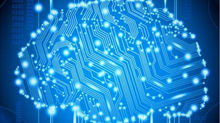Aging and BCI

Aging is a natural process that is inevitable for all people. As society makes advancements in technology and healthcare, life expectancy and the proportion of elderly that make up our population have increased: 22% of the world’s population will be 60 years old or older by 2050. When you think of aging, what do you think of? Perhaps the more obvious physical changes
come to mind: grey hair, wrinkles, or a stooped posture. But what is happening to our brains as we age? As our brains age, they undergo many changes regarding not only brain size and vasculature, but also with regards to cognition. We experience a natural decline in memory and attention, which are further exacerbated in the most common neurodegenerative disorders impacting older adults, such as dementia, Parkinson’s disease, and Alzheimer’s disease. This natural decline in functioning of older adults’ nervous systems affect various aspects of their lives beyond just memory and attention, such as movement, thinking, learning, sensory perception, sleep, behavior, judgement, speech and language, mood, and problem solving. Despite these neurological changes, though, there is one important capability of the brain that is maintained over time. That property is neuroplasticity, which is the ability to reform and develop new connections between neural synapses in response to learning. While the rate and extent of learning declines as we age, neuroplasticity still remains intact, contrary to what the phrase “you can’t teach an old dog new tricks” may imply. So how can we use neuroplasticity to combat the natural effects of aging? The main method is neurorehabilitation, which is the medical process of recovering from an injury to the nervous system (however, the

principles of neurorehabilitation can be applied to healthy older adults as well). Although neurorehabilitation is normally administered in a medical setting, the recent and rapid development of brain-computer interfaces (BCIs) has allowed for technological, user-friendly means of administering neurorehabilitation. If you are unfamiliar with BCIs, they are essentially a non-invasive, computer-based system that records, analyzes, and transforms brain signals to use them as commands for technology. For example, a person could type out words or control a wheelchair using purely their brain signals. With the development of BCIs targeted towards our ageing populations, it is important to reflect on current models of neurorehabilitation for geriatric populations. What are the current practices, and how can they be altered and even improved by the use of BCIs?
Some of the current models of neurorehabilitation include Proprioceptive Neuromuscular Facilitation (PNF), Neurodevelopmental Treatment (NDT), Task-Analysis and Task-Specific Training, and Neurofeedback Training (NFT). Many of these techniques focus on movement and neuromuscular aspects and thus require a medical setting and team of professionals. PNF, for example, uses muscle strengthening and stretching to improve joint stability, neuromuscular coordination, and range of motion. NDT similarly focuses on movement patterns and motor learning in order to improve sensory-motor functioning and neuromuscular coordination. Task-Analysis and Task-Specific Training moves away from the focus of motor aspects and instead focuses on improving the patient’s ability to complete certain functional tasks relevant to them. NFT is where we start to delve more into BCI; NFT uses electroencephalography (EEG) to show individuals their current brain wavepatterns and train them to focus on achieving an optimal brainwave pattern. However, this technique also requires a professional to explain the significance of brainwave patterns and identify when the individual has achieved the optimal pattern.

How then can BCI be used to develop more readily available and engaging methods of neurorehabilitation while focusing primarily on cognitive functions, rather than neuromuscular aspects? Current clinical trials are being conducted to develop a cognitive training system utilizing BCIs for healthy elderly individuals. Most of these BCI-based cognitive training interventions focus on attention since this cognitive function is critical for other processes, such as memory and problem solving. For example, one study by Lee and colleagues in 2013 tested the effectiveness of a game focused on individualized memory and attention training using a BCI. The training was done on a cohort of healthy elderly individuals for 24 thirty minute sessions over the course of 8 weeks. The BCI can analyze EEG waves to quantify attention level, therefore allowing individuals to use their attention to control a computer game. The system is individualized because the BCI calibrates one’s baseline attentive state and EEG profile before playing the actual game. The actual memory game consists of computerized card-pairing, during which individuals can open and close cards on the screen by using their attention and focus. Before and after the use of BCI over the course of 8 weeks, there were significant improvements in immediate and delayed memory, visuospatial skills, and attention. Another study conducted by Laiz and colleagues evaluated similar cognitive domains, including memory, attention, intellectual, spoken language, and visuospatial domains, via BCI-based cognitive training

programs designed for elderly individuals to avoid cognitive impairment. Elderly participants were asked to participate in 10 training sessions spanning over 5 weeks, including one 60 minute neurofeedback training using BCI and one 20 minute working memory training session per week (for a total of 10 training sessions throughout the course of the trial). The training sessions included activities focused on pictorial recognition, visual perception, expressive and receptive speech, spatial orientation, and immediate and logical memory. For example, the test of immediate memory involved memorizing and retaining 10 words whereas the logical memory test focused on relationships participants made to memorize items. All activities aimed to resemble common daily activities in order to make the training more functionally useful and improve quality of life. Before and after the 5 weeks of training, results showed that the experimental group had significant improvements in all cognitive domains mentioned earlier in comparison to the control group. Another successful study by Jiang and colleagues used scalp EEG and neurofeedback training to create an BCI-based cognitive training intervention focusing on attention levels. The test presents a series of superimposed transparent images of a scene and a face. The participant, who wears an EEG headset that can record brain signals related to attention, is asked to then focus on one of the images, either the scene or the face, and ignore the other. Based on known EEG markers, which are brain signals known to be associated with certain brain processes, the experimenter could measure the level of attention and focus the subject was applying to the target image. A high level of attention would cause the target image to become clearer, thus rewarding the participant for their focus. All of these successful clinical trials point to the promising efficacy of a BCI-based cognitive training system for older adults; however, how feasible would implementing such interventions be?


BCI-based interventions are beginning to be seen as more preferable over traditional neurorehabilitation and cognitive interventions because they do not require trained professionals and can be completed from the comforts of one’s own home, which is particularly useful for older adults with financial or mobility issues. These interventions are also user-friendly, interactive, and non-invasive. As the elderly population continues to increase, using such accessible interventions can help easily improve the quality of life of older individuals and potentially reduce national healthcare costs tied to age-associated cognitive declines. Additionally, since BCI uses neurotechnology to record and analyze brain signals, these systems can also be used to identify early EEG markers of cognitive disorders and issues with brain connectivity, allowing older individuals to be diagnosed and seek medical care earlier. Despite these benefits of BCI-based cognitive training systems, there are some issues with their implementation in broader society. For example, the success of the system truly depends on the individual, first and foremost. For example, older individuals must have a high level of motivation to stick to a training routine, since such biofeedback interventions are only useful if they are practiced over regular repetitions over the course of a certain time period, often lasting several weeks. Also, how many older individuals will have access to such BCI-based cognitive trainings systems, both on a national and global level? How much will these systems cost? How can these systems be utilized in developing countries and in underserved communities? Other issues with implementation of these systems concern regulation. What medical regulations and policies will be put in place to ensure successful implementation of these devices? The last main issue with implementing these devices in society is the generalization of such training assessments. First of all, as can be seen by the clinical studies described earlier, there is a great variety in the type of tests and cognitive domains targeted by these training systems, which can prevent the development of a generalized training that can be applied to all individuals. Additionally, individuals have differences in their cognitive functioning, including complicating factors such as neurodegenerative disorders, depression, anxiety, etc., that can affect their abilities and neurorehabilitation goals and results; this heterogeneity in the eldely population seriously hinders implementing a BCI-based cognitive training system that is applicable to all individuals while also providing personalized intervention. Overall, while a BCI-based cognitive training system can be extremely helpful for improving the cognitive functioning and quality of life of our growing elderly population, it is important to consider these limitations in order to assess the impact and feasibility of such incredible technological interventions.

Works Cited
https://www.ncbi.nlm.nih.gov/pmc/articles/PMC5725432/
https://www.ncbi.nlm.nih.gov/pmc/articles/PMC3832588/
https://www.jneuro.com/neurology-neuroscience/efficacy-of-a-cognitive-training-and-domotic-control-program-bci-to-prevent-cognitive-impairment.php?aid=9134
https://www.frontiersin.org/articles/10.3389/fnagi.2017.00052/full
https://www.ncbi.nlm.nih.gov/pmc/articles/PMC3497935/





















